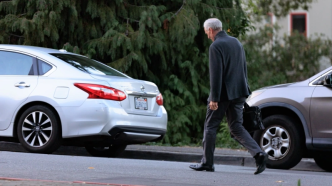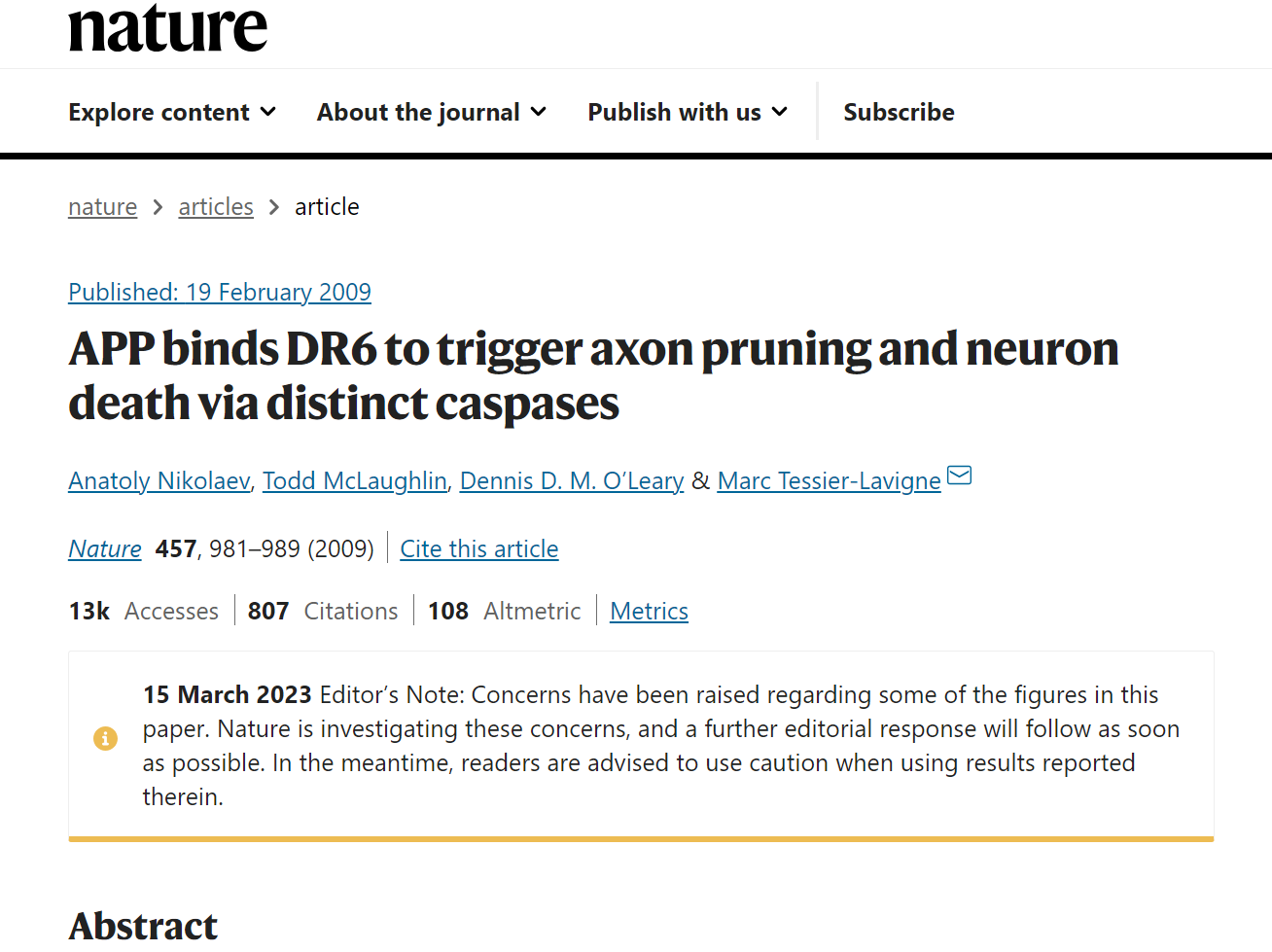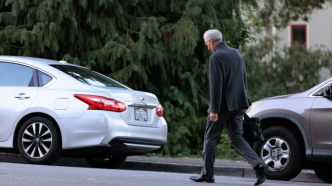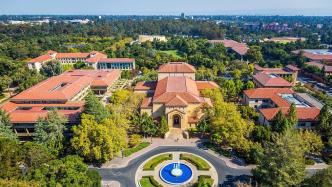
The principal is also suspected of academic misconduct?
After being accused of academic misconduct such as tampering with paper data and pictures, and after eight months of review, on July 19, 2023, the day the review report was released, Marc Tessier-Lavigne, the 11th president of Stanford University and a "star" expert in Alzheimer's disease research, announced his resignation - resigned as president of Stanford University.
"Effective from August 31, 2023." Jerry Yang, chairman of the Stanford University Board of Trustees, said in a public statement, adding that the board of directors has appointed Professor Richard Saller to serve as interim president of Stanford University beginning September 1, 2023 and continuing until the next president of the school takes office. In the next few weeks, the board will appoint a committee to select a new principal. Marc Tessier-Lavigne will continue as a tenured professor in the Department of Biology at Stanford University.

Marc Tessier-Lavigne will continue as a tenured professor in the Department of Biology at Stanford University following his resignation as Stanford president.
“I am pleased that the panel found that I did not engage in any fraudulent or falsified scientific data. Specifically, the panel did not find that I had committed any misconduct in the 12 papers reviewed, nor did it find that I had knowledge of or disregard for research misconduct in my laboratory,” Marc Tessier-Lavigne said in the open letter.
Marc Tessier-Lavigne said he was lead author on five of the 12 issue papers reviewed by Stanford's aforementioned special committee. He will retract 3 papers and make corrections to 2 other papers.

On November 30, 2022, the Stanford Daily announced that Stanford University had launched an investigation into President Marc Tessier-Lavigne's suspected academic misconduct.
"Long-winded correction." In this regard, Stanford University's newspaper, The Stanford Daily (The Stanford Daily) reported on the 19th, adding that the above-mentioned papers have been widely cited.
Marc Tessier-Lavigne said he was a non-lead author on seven of the 12 question papers reviewed. "With respect to these papers, the panel's conclusions certify that I am not aware of any error or manipulation of the research data."
He also said that in the 32 years he led the laboratory research, as the main author, he published 74 papers; as a non-main author, he published more than 150 papers.
Marc Tessier-Lavigne served as president of Stanford University for nearly seven years. His resignation is believed to be related to the public exposure of the Stanford Daily eight months ago.
Accused of academic misconduct, the academic "star" principal fell from the altar
On November 29, 2022, the Stanford Daily reported that “a paper co-authored by Stanford University President Marc Tessier-Lavigne has been publicly accused of containing multiple doctored images, and a well-known research journal confirmed to the Stanford Daily that it is reviewing the paper for scientific misconduct.”
This well-known neuroscientist and academic "star" in the field of Alzheimer's disease research fell from the altar and fell into a crisis of academic trust.
In December 2022, the Stanford University Board of Trustees convened a special committee of its members to oversee a review of issues related to the scientific papers signed by President Marc Tessier-Lavigne.
The controversy once focused on a heavy research paper published by Marc Tessier-Lavigne on February 19, 2009 in the international academic journal Nature. According to the paper, the experimental results show that "the extracellular fragment of the amyloid precursor protein acts through receptor 6 (DR6) and caspase 6 (caspase 6) to cause Alzheimer's disease."
The aforementioned research results are considered by some experts to be worthy of the Nobel Prize. Based on this research, Genentech also announced that it is developing antibody drugs and small molecule drugs that may help millions of patients suffering from this devastating disease.
But then, the experimental conclusions and research process of the aforementioned paper were questioned, and the data in the paper were also questioned as forged, and the manuscript was called to be withdrawn.
The title of the paper involved is "Amyloid precursor protein (APP) binds death receptor 6 (DR6), triggering axon pruning and neuron death via distinct caspases" (APP binds DR6 to trigger axon pruning and neuron death via distinct caspases).

Mark Tessier-Lavigne published a heavyweight research paper in the international academic journal Nature on February 19, 2009, which was questioned.
In December 2016, some readers left a message on the review website PubPeer after the publication of the paper, saying that there is no comparison between Figures 4e and 4i in the aforementioned paper.
In February 2023, another reader left a message questioning Figure 1 and Figure 5 of the paper.
On March 6, 2023, the Stanford Daily reported that Genentech had launched an internal review of Mark Tessier-Lavigne's seminal 2009 research paper on Alzheimer's disease that was questioned.
Four years after the aforementioned paper was published, on March 15, 2023, the journal Nature published an Editor's Note stating that some of the data in the aforementioned paper raised concerns. Nature is investigating these issues and will issue a further editorial response as soon as possible; readers are advised to exercise caution when using the results of the aforementioned paper.
On April 6, 2023, Genentech publicly released the review results, titled "2023 Genentech Review of 2009 Nature Papers and Related Research" (Findings of 2023 Genentech Review of 2009 Nature Paper and Related Research). Experts noted that Figures 1d and 5e and Figures 9c and 17c of the supplementary material included duplicate images, the report said. The Western blot panel for Caspase 6 in Figure 6d of the Supplementary Material appears to contain an image composited from the two images. "We have not yet determined how these anomalies occur." Genentech reported the findings to the journal Nature.
Genentech’s aforementioned report stated that “genetic experiments conducted by Genentech showed that in two different mouse models, neurological features associated with Alzheimer’s disease, such as amyloid plaque deposition and synapse loss cognitive behavioral deficits, were not dependent on DR6. Accordingly, the RRC terminated the DR6 drug development project in 2012.”
Genentech’s aforementioned report said, “Many people hope to finally find a cure for Alzheimer’s disease. Many scientists involved in this project have invested a lot of time and energy into this project, but the basic biological principles have been proved wrong.” “Genentech’s termination of the DR6 drug development project marks the end of many years of challenging and often frustrating research work.”
According to the aforementioned Genentech report, the results of the aforementioned genetic experiments were written by Marc Tessier-Lavigne in collaboration with researchers at Genentech and other institutions into two papers, which were submitted to the Journal of Neuroscience in 2013 and published in 2014. Both papers were co-authored by Dr. Tessier-Lavigne with researchers from Genentech and other companies. After the publication of these papers, the scientific community began discussing how the results and conclusions reported in them differed from those reported in the 2009 Nature paper.
Follow-up action: retracted 3 papers and corrected 2 papers
Marc Tessier-Lavigne announced on his laboratory webpage that he would take corrective measures to withdraw or correct 5 problematic papers as the main author.
But he also said, "It needs to be emphasized that the scientific panel found no evidence of any research misconduct by me in these five papers, nor did it find that I knew or reckless about research misconduct in my laboratory, or reasonably expected that I would be able to discover research misconduct by others that would warrant these corrective actions."
Regarding the three papers published in Cell and Science respectively, Marc Tessier-Lavigne said that he intends to withdraw them as soon as possible, and said that although the journal Cell had previously refused to publish the corrections, saying that the corrections were unnecessary or inappropriate, he also said that the journal Science had previously agreed to publish the submitted corrections, but did not do so later.
He says that while many of the results in the three aforementioned papers have been confirmed, questions about the multiple images in those papers had surfaced years ago, all generated by the same scientist in his lab. The panel's investigation has further revealed that the scientists who generated the images carried out serious data manipulation when they published the papers more than two decades ago. "The panel's report confirms that I had no knowledge of the manipulation of the data by this individual at the time the paper was published and, in fact, I only learned of it during the panel's review."
According to Marc Tessier-Lavigne, the panel's report states that "the panel has no reason to believe that Dr. Tessier-Lavigne was aware of the manipulation of data in these studies at the same time as it occurred in the three papers. In fact, it would be unreasonable to expect Dr. Tessier-Lavigne to have discovered instances of data manipulation in these studies before or when the relevant papers were published." However, based on this new information, it is clear that the papers must be retracted.
Regarding the aforementioned paper published in the journal Nature in 2019, Marc Tessier-Lavigne said that the expert panel found that the fraud allegations related to this paper were "inaccurate". Multiple anomalies in related papers have come to light over the past few months, with investigations uncovering some pre-publication inconsistencies in experimental results. "It is important to emphasize that I informed the panel that I was not aware of these new issues prior to publication, and that the panel found no evidence to the contrary." The panel also found that the method of publishing the follow-up paper was "within the bounds of normal scientific practice," but that the practice of not additionally retracting or directly correcting the paper was "suboptimal." "It is my intention to issue such corrections as soon as possible."
Regarding a paper published in the journal Nature in 2004, Marc Tessier-Lavigne said that the issue of several images in the paper in question was raised in December last year. "That's when I first learned about these issues. The panel found no evidence that I knew or reasonably knew about these issues."
Marc Tessier-Lavigne acknowledged that the two images in question in the aforementioned 2004 Nature paper were produced in his lab, and that at least one of them showed evidence of manipulation of the research data. "While one of my co-authors was able to find raw data confirming the results shown in the figure, it still needs to be overhauled. I have contacted the journal about this matter."
According to public information, Marc Tessier-Lavigne was born in Trenton, Ontario, Canada. He has a BA in Physics from McGill University, Canada, and a BA in Philosophy and Physiology from Oxford University, UK, where he was awarded a Rhodes Scholarship. He received his PhD in Neurophysiology from University College London (UCL) in 1987 and worked as a postdoctoral fellow at UCL and Columbia University.
Between 1991 and 2003, he held faculty positions at UCSF and Stanford University. He is also a Howard Hughes Medical Institute investigator.
In 2003, he was hired to join the biotechnology company Genentech as executive vice president of research and chief scientific officer, directing 1,400 scientists in disease research and drug discovery for cancer, immune disorders, infectious diseases and neurodegenerative diseases.
In 2011, he became president of The Rockefeller University in the United States.
On September 1, 2016, Marc Tessier-Lavigne became the 11th president of Stanford University and announced his resignation on July 19, 2023.
According to the Stanford University website, Marc Tessier-Lavigne is a world leader in the study of brain development and repair. His research focuses on the etiology and treatment of degenerative brain diseases such as Alzheimer's and Parkinson's, and the treatment of spinal cord injuries. He and colleagues shed light on how neural circuits form in the brain during embryonic development by identifying molecules that guide the formation of connections between nerve cells. Defects in these mechanisms lead to neurological disorders. These mechanisms also provide targets to help regenerate neural connections after trauma. His contributions have been recognized with numerous awards and honors, including election to the National Academy of Sciences, the National Academy of Medicine, and more.
Links to related papers:
1. Cell (1999): https://doi.org/10.1016/S0092-8674(00)80804-1
2. Science (2001): https://www.science.org/doi/10.1126/science.1059391
3. Science (2001): https://www.science.org/doi/10.1126/science.1058445
4. Nature (2009): https://www.nature.com/articles/nature07767
5. Nature (2004): https://www.nature.com/articles/nature03080


